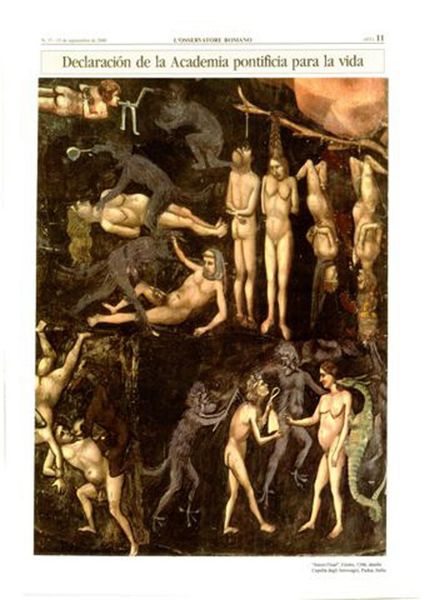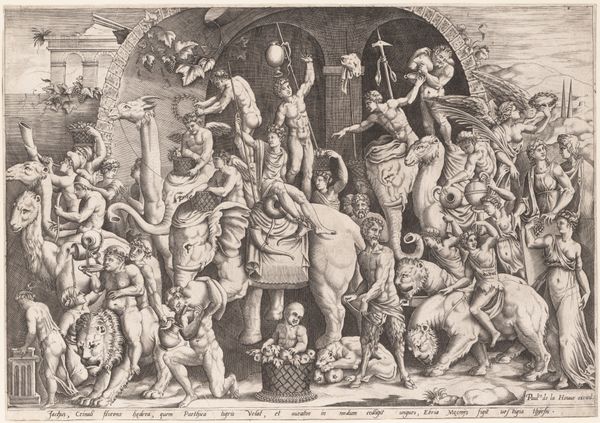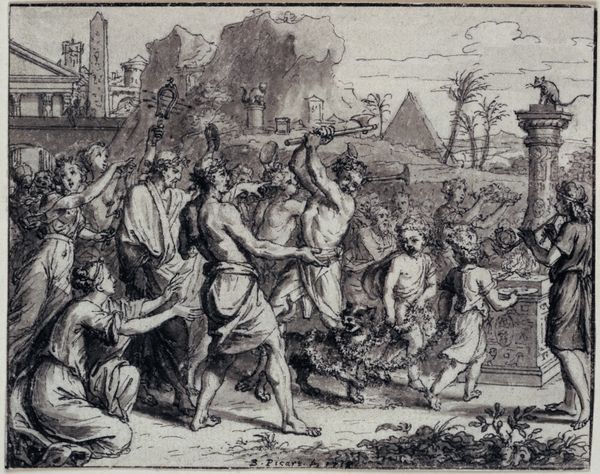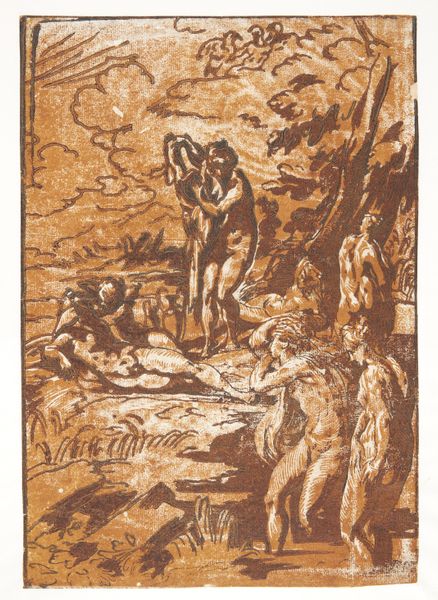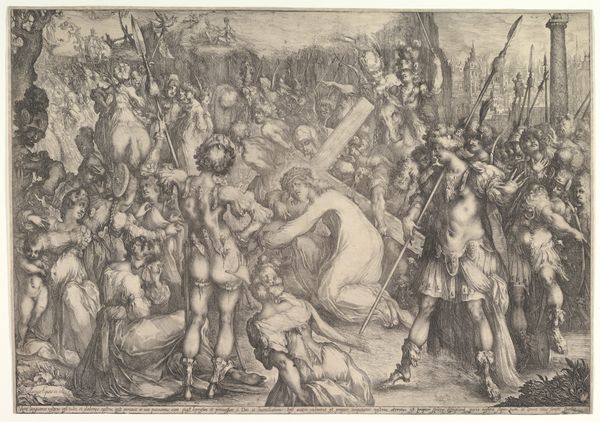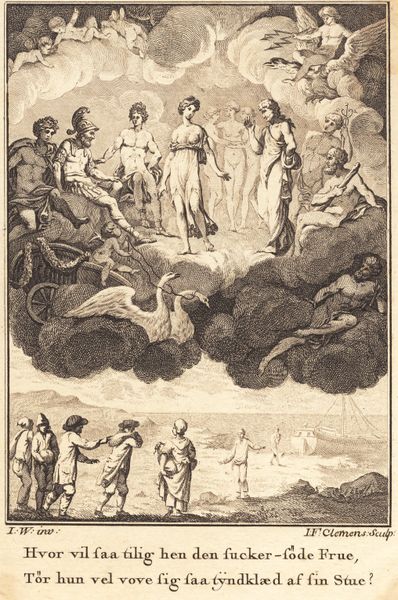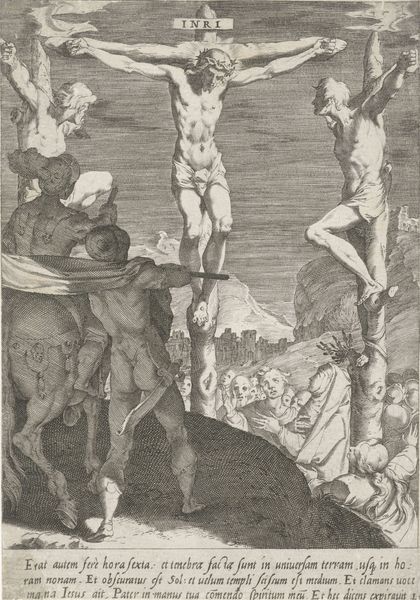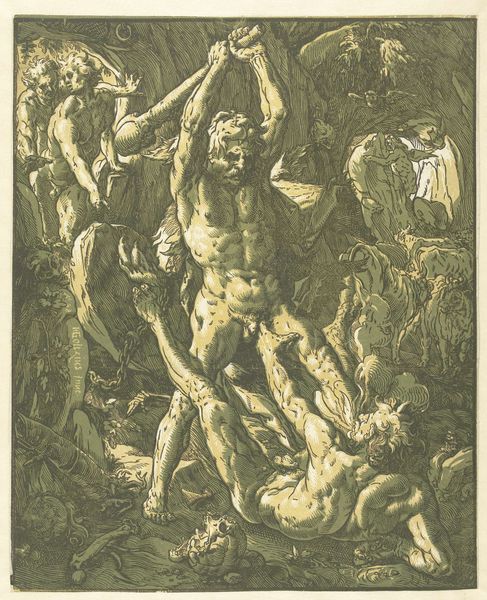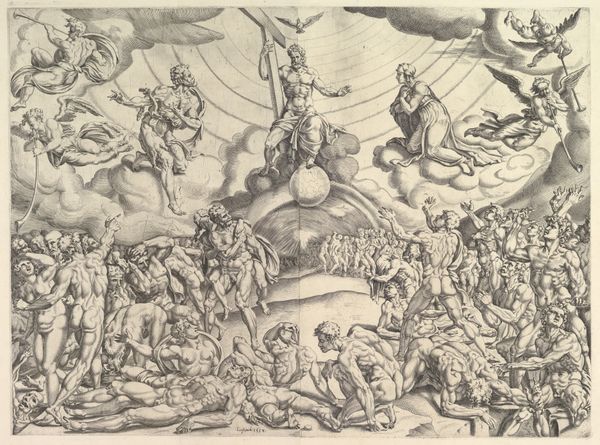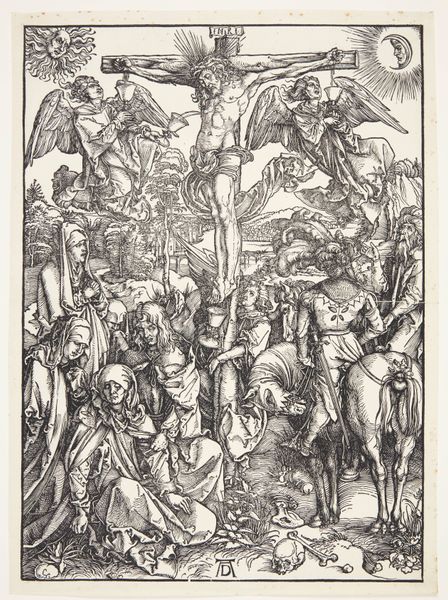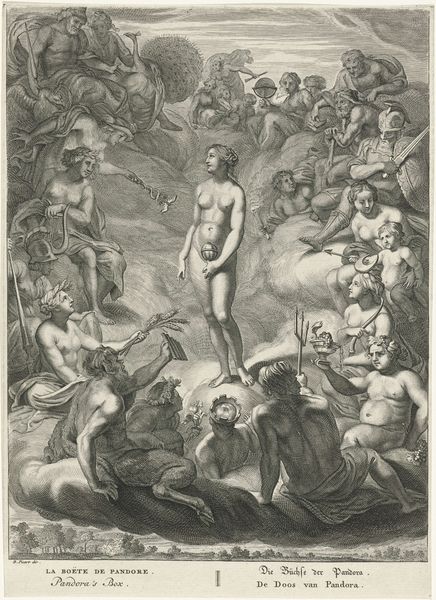
The Crucifixion and the Glorification the Ten Thousand Martyrs on Mount Ararat 1515
0:00
0:00
textile
#
abstract painting
#
textile
#
possibly oil pastel
#
text
#
oil painting
#
fluid art
#
acrylic on canvas
#
underpainting
#
naive art
#
christianity
#
men
#
mythology
#
painting painterly
#
mixed media
#
watercolor
#
christ
Dimensions: 307 x 205 cm
Copyright: Public domain
Curator: Looking at "The Crucifixion and the Glorification the Ten Thousand Martyrs on Mount Ararat," painted around 1515 by Vittore Carpaccio, the immediate historical context bursts forth, a potent brew of Venetian artistry and the simmering tensions with the Ottoman Empire. What's your initial reaction? Editor: Woah. Overwhelming is the first word that jumps to mind. It feels like a Boschian nightmare crossed with a parade float gone terribly, terribly wrong. So many bodies, all heading…somewhere. Or nowhere. Depends on the body, I guess. Curator: Precisely. Carpaccio constructs a complex visual narrative reflecting the political and religious anxieties of his time. The scene unfolds with layers of cruelty and devotion. The martyrdom, of course, highlights the religious conflict between Christianity and Islam, resonating with the Venetian Republic's precarious position amidst Ottoman expansion. What do you make of the layering? Editor: The layering…it’s kind of genius, honestly. This horrific event feels weirdly…joyful? The light is gorgeous. I keep wanting to separate the brutal reality of what I am seeing and the almost festive quality to the overall design of the picture. Is that supposed to make me feel uncomfortable? Because, yeah, it's working. Curator: Indeed! The artist deftly uses color and detail to underscore the duality inherent in religious zealotry and state power, a common strategy for Venetian elites during the Italian Renaissance. You sense the internal conflict in the community. Is it propaganda? Is it personal faith? And, as always, who benefits from these images of glorified suffering? Editor: Okay, propaganda for sure. And honestly? I see echoes of this now. The painting asks questions about power, oppression, sacrifice—and, yeah, definitely who profits. Makes me think about current conflicts, honestly, about how stories of valor can obscure uglier realities. Still, the artistic hand... Carpaccio created something compelling out of sheer brutality. Curator: Absolutely, seeing through that complexity is part of how it continues to be impactful to us now, offering pathways for understanding. Editor: I'm going to be thinking about those intertwined threads for a while. Power, piety, painting—it’s a heady combination. Thanks for walking me through that.
Comments
No comments
Be the first to comment and join the conversation on the ultimate creative platform.
